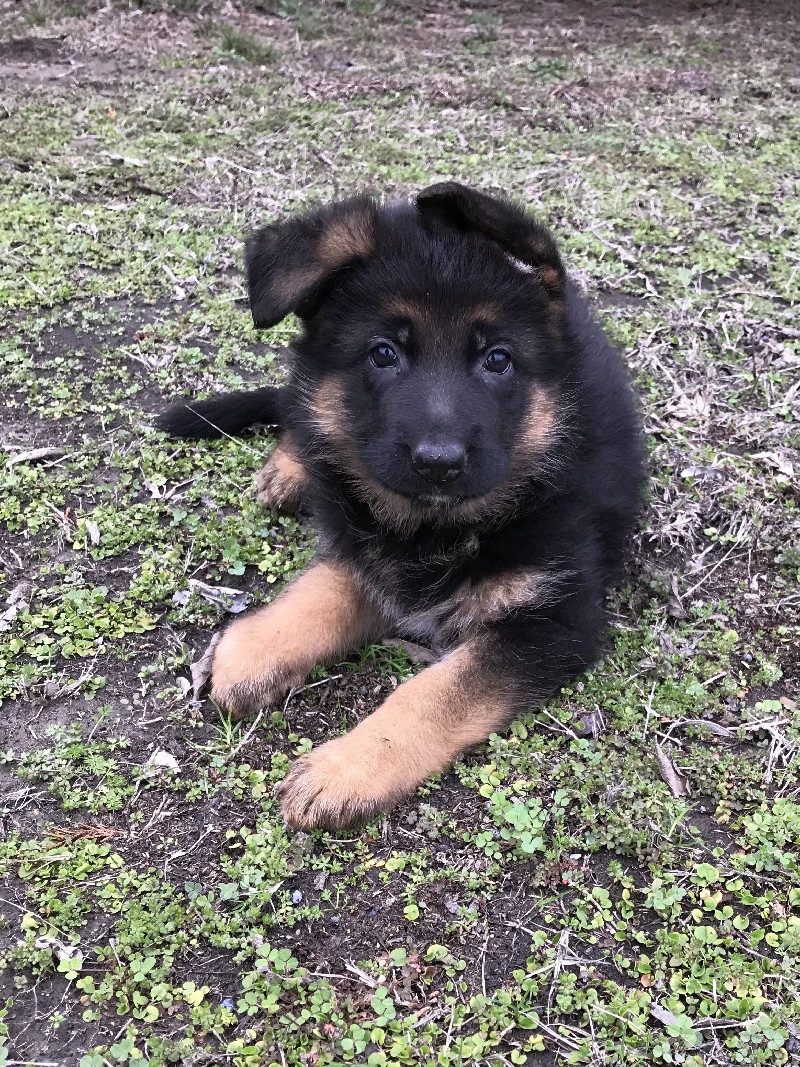
You feed them what?!
Here at Nevada Haus German shepherds, all of our dogs are raised on a biologically appropriate raw diet. This is comprised of correct proportions of meat, bone, and organ, to give them the ideal nutrition they require with no added fillers at all. Feeding in this manner contributes to a slow, healthy growth rate and development, while providing the nutrition they require in the purest form. This may seem daunting, after all, we as humans have been conditioned to think that filling a bowl with processed kibble is the best thing we can do for our pets, but allow me to explain our choice and shoot down some myths.
All kibble is highly processed. It just is. There’s no way around that. It’s made up of either a grain base, or in the case of grain-free, a potato base, with some added meat of some sort, and sometimes bits of vegetables. It’s is then cooked at extremely high temperatures and compressed into the little kibble shapes we are all familiar with. Most has added dyes of some sort, and then a vitamin mixture is sprayed over the top of it all so the claim can be made of “balanced nutrition”. There are also chemical additives and scents added to convince your pet that it’s food, and to actually eat it, since it is so far removed from their natural diet that they likely wouldn’t recognize it as edible without these additives. Kibble has only been around for the past hundred years or so, as was designed as a use for waste products from human foods, at a time when resources were tighter.
Raw means raw. We do not cook their food at all. We store it in freezers and thaw before feeding, although in hot weather the dogs sometimes do enjoy it still partially frozen. Cooked bones can be quite dangerous for dogs, as they become brittle and splinter easily, but raw bones are more pliable and safe, and very nutritious, as nature intended.
Many people, even a number of vets, consider raw feeding to be a fad, but the truth is it is what canines have been eating for thousands of years, long before dog food existed, and what their bodies are designed for. Their long canine teeth are there to tear through flesh, their jaws exert plenty of pressure to easily crunch through bones. Their shorter intestinal tract does not digest plant matter or carbohydrates well at all, in contrast to humans or vegetarian species, which have a far longer intestinal system. Long story short, dogs are made to eat meat!
There is plenty of false information floating around regarding raw feeding, much of which is perpetuated by the pet food industry. Feeding raw food is extremely unlikely to give your dog salmonella, nor will your dog be shedding salmonella, or anything else horrible. Their digestive enzymes are far stronger and more acidic than ours, and their saliva has antibacterial properties designed to combat this. In recent years, there have been a vast amount of kibble recalls for containing salmonella, listeria, and other horrible and dangerous bacteria, so feeding processed food is certainly not a solution. Just use common sense practice and handle this as you would any other meat, and wash your hands after touching it.
There are a variety of options when it comes to feeding your dog a raw diet. A properly balanced raw diet should consist of 80% muscle meat, 10% bone, 5% liver, and 5% other secreting organ. Feeding a variety of protein sources is also important- at least three, but the more the merrier- to be sure you’re getting the different vitamins and trace minerals that is required. This all sounds pretty daunting, but fortunately there are companies that put all this together for you in a ground form so you can achieve this correct balance without all the hassle. We source our food from Texas Tripe, which has a lot of convenient options if you’re located in Texas or surrounding areas. If you’re elsewhere there are many other sources for raw pet food, just do a quick online search and there’s a good chance you’ll find a source in your area.
It’s also important to remember that you’ll achieve balance over time- every single meal doesn’t have to be exactly and precisely correct, as long as you vary things in the long run. Many people will check the clearance meat area of the grocery store, where you can often find different types of meats at a discount to supplement a meal, or watch for sales. If you have a friend or neighbor who is cleaning out their freezer, that can often get you some bonus meat, too. We avoid processed meats, like sausage or ham- the additives and sodium aren’t good for your dog, but dogs don’t mind freezer burnt meat one bit, so that can be a nice add on for them. In addition to the ground varieties we also feed items such as chicken quarters, turkey backs, and small fish such as mackerel. Crunching the bones in raw chicken and turkey helps to keep your dog’s teeth sparkling clean and free of tarter.
We have chosen this method of feeding for our dogs and puppies’ optimal health. If you are thinking of purchasing a Nevada Haus German Shepherd this is the diet your pet was weaned onto and raised on. We are happy to answer any questions you may have, and to help you with the healthiest options for your new puppy.
Contact Us Today to Learn More